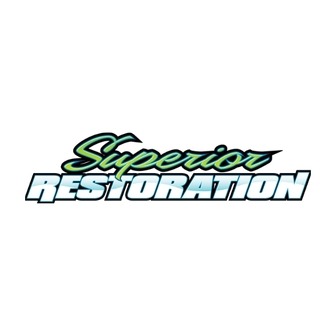Superior Restoration





Water Damage Restoration - San Diego, CA
24/7 Emergency Response • Fast, Reliable Repairs
Has your San Diego property suffered from flooding, leaks, or water intrusion? At Superior Restoration, we're your local experts in bringing damaged homes and businesses back to life.
Payment Methods: All payments and insurance
Follow On:
https://maps.app.goo.gl/Vn2oWmMowQdP6dfD9
http://facebook.com/superiorrestorationinc/
https://www.instagram.com/superiorrestorationinc/
.............................................................................................................
Water damage is one of the most common and potentially destructive issues property owners face. Whether caused by natural disasters, plumbing failures, or structural leaks, water intrusion can lead to extensive property damage, health hazards, and costly repairs. Water damage restoration is the systematic process of mitigating, repairing, and restoring a property to its pre-loss condition. This guide explores the causes, consequences, and detailed steps involved in water damage restoration, emphasizing the importance of timely and professional intervention.
The severity of water damage depends on the source, duration of exposure, and the materials affected. Porous materials like drywall, wood, and insulation absorb water quickly, leading to warping, mold growth, and structural instability.
Delaying water damage restoration can exacerbate the problem. Within hours, water can spread throughout the property, saturating floors, walls, and furniture. Mold can begin to develop within 24-48 hours, posing serious health risks. Electrical systems may become compromised, and structural components can weaken, increasing the risk of collapse.
Prompt restoration minimizes damage, reduces repair costs, and ensures a safer environment. Insurance companies also favor swift action, as it demonstrates responsible property management and may influence claim approvals.
The Water Damage Restoration Process
Professional water damage restoration involves a multi-step approach designed to assess, mitigate, and restore affected areas. The key stages include:
1. Inspection and Assessment
The first step is a thorough inspection to determine the extent of the damage. Restoration specialists use moisture detectors, infrared cameras, and hygrometers to identify affected areas, measure moisture levels, and classify the type of water involved:
Category 1 (Clean Water): From sanitary sources like broken pipes or rainwater
Category 2 (Gray Water): Contaminated water from appliances or sump pump failures
Category 3 (Black Water): Highly contaminated water from sewage, flooding, or stagnant sources
This classification guides the restoration strategy and safety precautions.
2. Water Removal
Using industrial-grade pumps and vacuums, technicians extract standing water from floors, carpets, and other surfaces. The goal is to remove as much water as possible to prevent further absorption and reduce drying time. In severe cases, submersible pumps may be used for large volumes of water.
3. Drying and Dehumidification
After water removal, drying begins. High-speed air movers and dehumidifiers are deployed to eliminate residual moisture from walls, floors, and furniture. This step is critical to prevent mold growth and structural damage. Technicians monitor humidity levels and adjust equipment as needed to ensure thorough drying.
4. Cleaning and Sanitizing
Water damage often leaves behind contaminants, odors, and debris. Restoration teams clean and sanitize affected areas using antimicrobial treatments, disinfectants, and specialized cleaning agents. Carpets, upholstery, and personal items may be cleaned or discarded depending on the level of contamination.
Odor removal techniques such as air scrubbers and fogging machines help restore indoor air quality. In cases involving black water, extensive sanitization is required to eliminate health hazards.
Restoration and RepairsThe final phase involves repairing or replacing damaged materials. This may include:Replacing drywall, insulation, and flooringRepainting walls and ceilingsRestoring cabinetry and fixturesReconstructing structural elementsRestoration aims to return the property to its original condition or better. In some cases, remodeling may be incorporated to improve resilience against future water damage.Mold RemediationMold is a common consequence of water damage. It thrives in damp environments and can spread rapidly, causing respiratory issues, allergic reactions, and structural decay. Mold remediation involves:Identifying and isolating mold-affected areasRemoving contaminated materialsTreating surfaces with antifungal agentsEnsuring complete drying and ventilationProfessional mold remediation is essential for safety and compliance with health regulations.Choosing a Restoration CompanySelecting a qualified water damage restoration company is crucial. Key considerations include:
Certification: Look for companies certified by the Institute of Inspection, Cleaning and Restoration Certification (IICRC)Experience: Choose firms with proven expertise in handling various types of water damageAvailability: 24/7 emergency services ensure rapid responseEquipment: Advanced tools and technology improve efficiency and outcomesInsurance coordination: Assistance with claims and documentation simplifies the processReputable companies provide detailed estimates, transparent pricing, and warranties on their work.Insurance and DocumentationWater damage restoration often involves insurance claims. Property owners should:
Document the damage with photos and videosKeep records of restoration expenses and communicationsContact their insurance provider promptlyWork with restoration companies that offer claim supportProper documentation facilitates smoother claims and ensures fair compensation.
Preventing Future Water DamageWhile not all water damage is avoidable, proactive measures can reduce risk:Regularly inspect plumbing and appliancesMaintain gutters and downspoutsSeal foundation cracks and roof leaksInstall sump pumps and water alarmsEnsure proper drainage around the propertyRoutine maintenance and early detection are key to preventing costly damage.
Environmental and Health ConsiderationsWater damage can introduce harmful bacteria, mold spores, and volatile organic compounds (VOCs) into the indoor environment. Restoration efforts must prioritize health and safety by:Using non-toxic cleaning agentsEnsuring proper ventilationConducting air quality testsDisposing of hazardous materials responsibly
Protecting occupants and technicians is a fundamental aspect of ethical restoration practices.ConclusionWater damage restoration is a critical service that protects property, health, and financial stability. It requires a systematic approach, specialized equipment, and professional expertise. Whether dealing with minor leaks or catastrophic flooding, timely intervention can make the difference between recovery and ruin.Property owners should understand the restoration process, choose reputable professionals, and take preventive measures to safeguard their investments. With the right response, even the most severe water damage can be effectively mitigated and restored.Using industrial-grade pumps and vacuums, technicians extract standing water from floors, carpets, and other surfaces. The goal is to remove as much water as possible to prevent further absorption and reduce drying time. In severe cases, submersible pumps may be used for large volumes of water.


